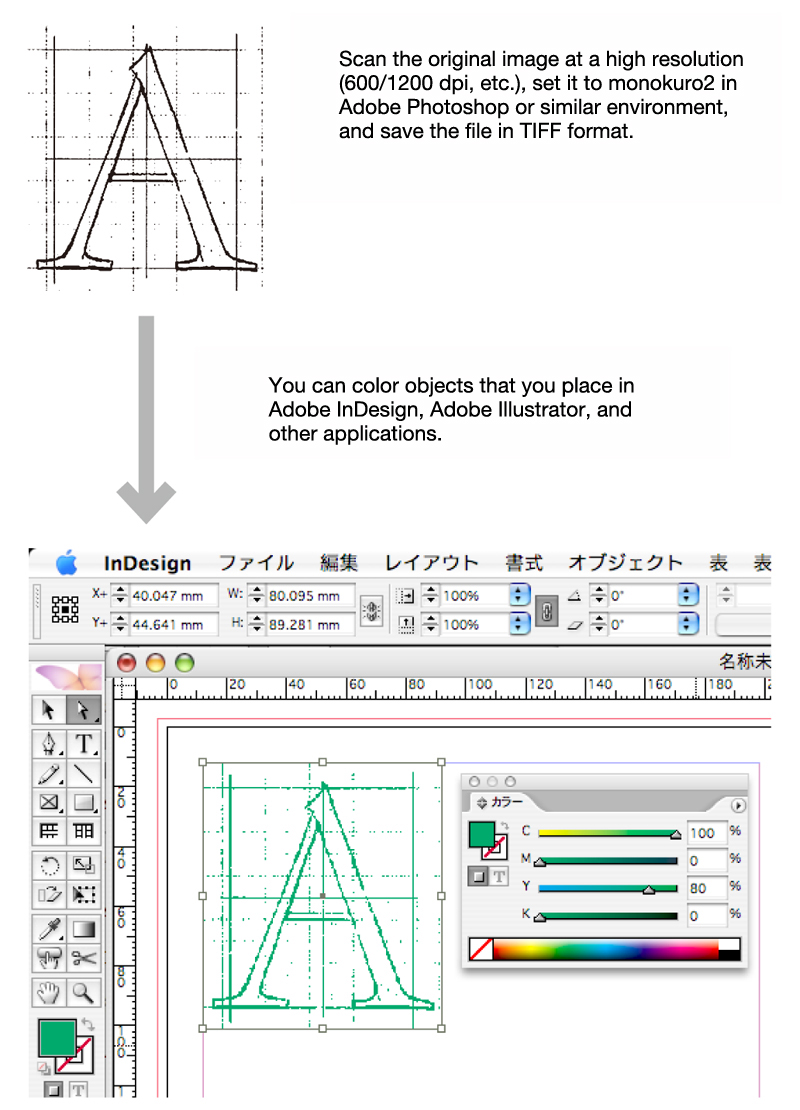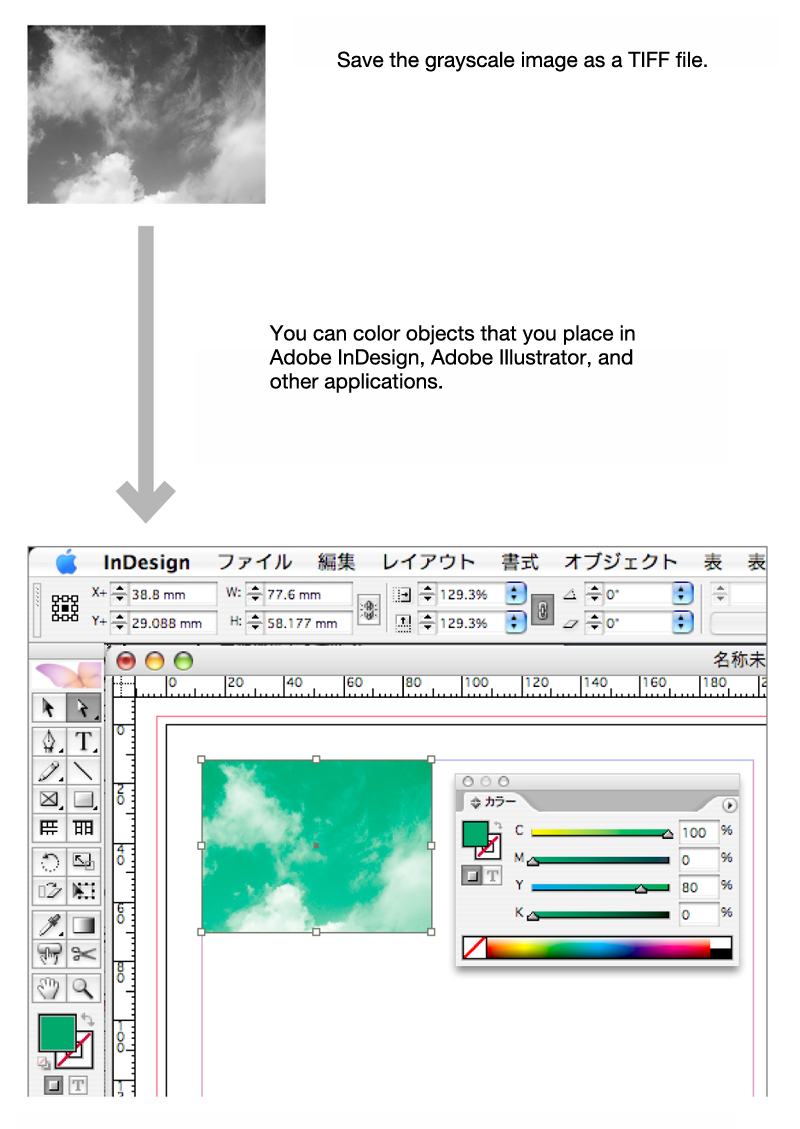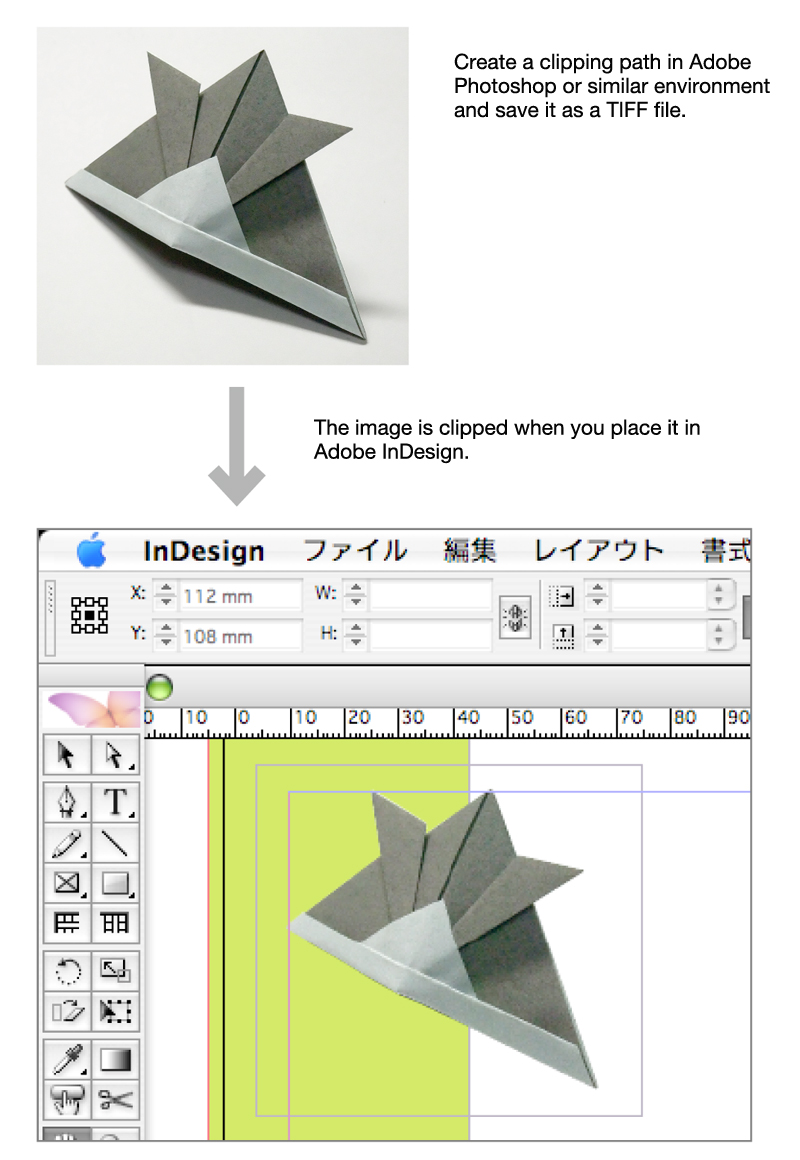TIFF
TIFF
TIFF
CATEGORIES
TIFF is the abbreviation for Tagged Image File Format and is a bitmap data file format. It carries the extension, .tif.
Using codes called tags to recognize data content enables information related to images to be stored in files. It is compatible with many color modes, including CMYK, RGB, grayscale and monochrome black and white (1-bit). TIFF can also be used for uncompressed images and images compressed with LZW, ZIP, JPEG, etc. It is a file format which is compatible with a range of functions. A large number of graphics software can read TIFF files which enables us to describe it as a very versatile file format. (On the other hand, because it can take various forms due to its expandability, it can cause compatibility problems, particularly when compressed.)
As it can handle uncompressed high-resolution images and supports CMYK color mode, TIFF is used along with EPS as the standard file format for image data used in publication printing. As a feature of TIFF, it enables monochrome black and white and grayscale images to be colored on other desktop publishing software (such as Adobe InDesign and Adobe Illustrator). It is often used when adding color to line art and hand-drawn style sketches as well as monochrome logos and other bitmap data. (It can be colored in PSD and JPEG but not in EPS). Like EPS, a clipping path (for cutting out images) can be applied to TIFF but the software used to place the image must support this function (supported in Adobe InDesign but not in Adobe Illustrator). An image of the same content would have a smaller data size and a faster output speed in TIFF than in EPS. It is better to use TIFF when printing on a non-PostScript printer.
 This is the screen that you see when you save a TIFF in Adobe Photoshop.
Here, you can choose whether you want to compress the image and, if so, the compression method you want to use.
For printing applications or when compatibility might be an issue, users normally leave images uncompressed.
This is the screen that you see when you save a TIFF in Adobe Photoshop.
Here, you can choose whether you want to compress the image and, if so, the compression method you want to use.
For printing applications or when compatibility might be an issue, users normally leave images uncompressed. TIFF is often used when coloring a monokuro2-gradation image in a DTP software environment.
Monokuro2-gradation images are effective for quickly transforming hand-drawn drawings and sketches into line drawings. In TIFF format, these images can be colored in DTP software.
TIFF is often used when coloring a monokuro2-gradation image in a DTP software environment.
Monokuro2-gradation images are effective for quickly transforming hand-drawn drawings and sketches into line drawings. In TIFF format, these images can be colored in DTP software. TIFF is often used when coloring a grayscale image in a DTP software environment.
TIFF is often used when coloring a grayscale image in a DTP software environment. When you create a clipping path in an image processing software application, the path is clipped in other DTP software.
You can also create clipping paths in TIFF files (not supported in Adobe Illustrator).
When you create a clipping path in an image processing software application, the path is clipped in other DTP software.
You can also create clipping paths in TIFF files (not supported in Adobe Illustrator).
